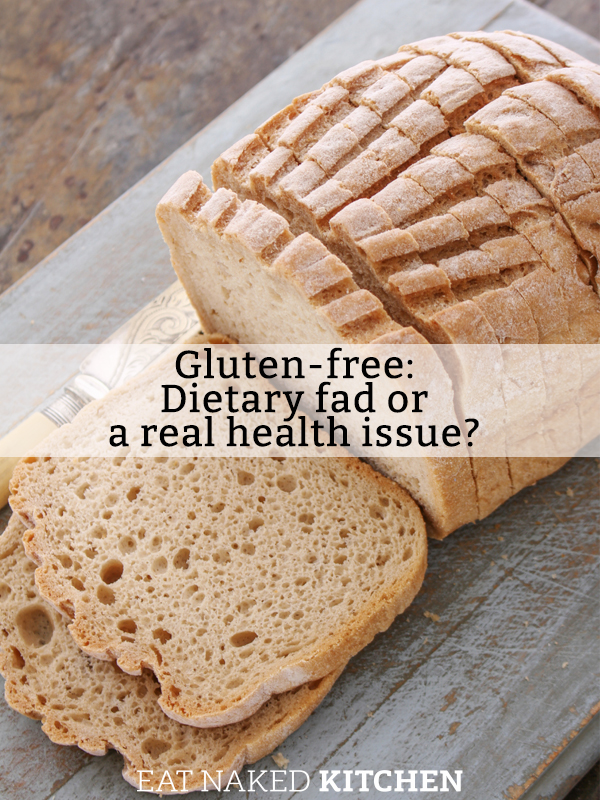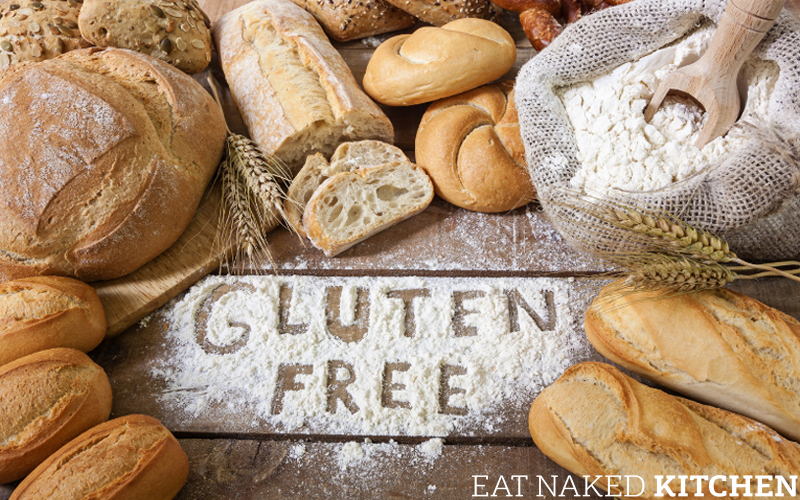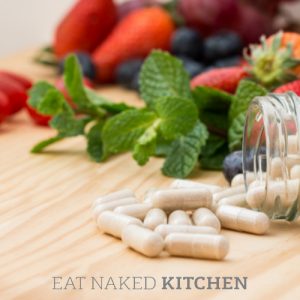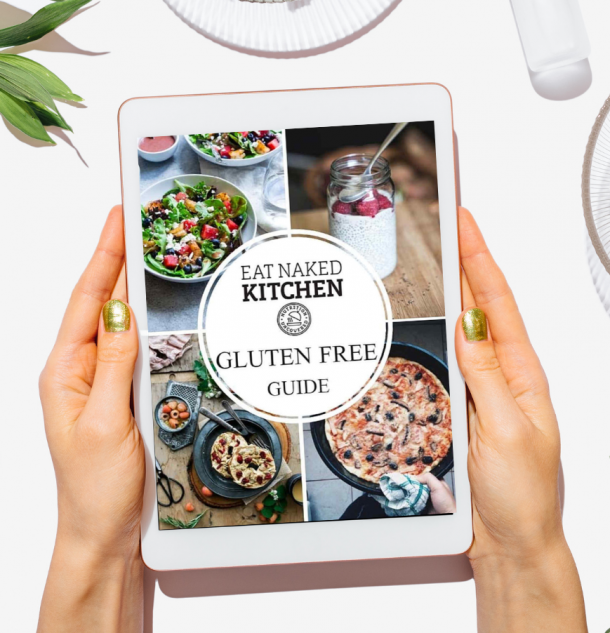You know that feeling of wishing you could “unknow” something? You move through life blissfully ignorant and then suddenly – BAM! – a powerful new piece of information enters your awareness and life never looks the same again. It’s just a part of expanding as a human being, but sometimes these little (or big) nuggets come with the requirement of major life change and you wish you’d stayed ignorant just a little longer.
That’s how I feel about gluten.
A few weeks ago, a reader wrote in accusing me of hopping on the gluten-free bandwagon. “Isn’t this just another fad?” he wrote. “Unless you’ve got celiac disease, is it really something we need to care about?”
Such good questions. Here were my short answers to him via email:
Is gluten a misunderstood and abused dietary trend? Yes
Is gluten-sensitivity a real and serious issue even if one is not formally diagnosed with celiac disease? Yes
Is gluten good for anyone? Arguably no.
Has the food industry abused this trend? Most definitely, and it will get worse before it gets better.
If something is “gluten-free” does that mean it’s good for you? Not necessarily.
This is a big, important, and complicated topic, and one I’ve been meaning to address for a while. I think it’s time. Let’s start with a little basic science so we’re all on the same page.
Gluten is the primary protein found in grains such as wheat, barley, rye, bulgur, spelt, and kamut. It’s what gives bread its chewy rise, what allows pizza dough to stretch without breaking. It’s also used as a thickener and a stabilizing agent in a lot of processed foods and cosmetics. At the most basic level, gluten is a composite of gliadin and glutenin proteins, joined by a starch in the endosperm.
Sounds harmless and natural enough, right? Well, unfortunately, there’s more to the story.
One of the most damaging aspects of gluten is the havoc it wreaks on the gut lining. You see, when we eat gluten, the gliadin portion of the protein triggers the release of a substance called zonulin in our small intestine. Zonulin increases the permeability of the gut lining, a phenomenon we call “leaky gut.”[1]
The gut lining is in many ways the final barrier between the outside world and what becomes part of our body on a cellular level. (I know this is a little mind-bending but bear with me.) One of our digestive tract’s many important roles is to decide what goes into our body – what literally becomes us – and what is excreted. That gut lining facilitates the transport of food broken down into microscopic components into the bloodstream.
Now, when the gut lining is compromised – such as with the release of zonulin after eating gluten-containing foods – lots of stuff can get into the bloodstream that shouldn’t be there, such as insufficiently digested food particles, toxins, and pathogens. Once in the bloodstream, they wreak havoc on the rest of the body, exhausting the immune system in the process as it moves in to clean up the damage. This is what we call “leaky gut”.
Celiac disease – the most extreme and only medically-recognized form of gluten intolerance – is an autoimmune disease that occurs in the small intestine, caused by a reaction to the gliadin component of gluten. On exposure, the enzyme transglutaminase modifies the protein, triggering the immune system to attack the lining of the small intestine and causing significant inflammation and damage to this all-important and delicate gut lining. The result of untreated celiac disease is severe chronic malabsorption of nutrients, which often leads to numerous other health complaints. The only treatment is the strict, lifelong elimination of gluten from the diet.
Clearly, being gluten-free is no joke for someone with celiac disease. But what about the rest of us?

Well, you don’t have to have full-blown celiac disease to be negatively affected by the leaky-gut created by gluten. It can be a formal IgE allergy to gluten, an antibody-mediated response to a component of gluten, or even a response not mediated by antibodies. And it’s about much more than just zonulin:
- Gluten-containing grains also bring with them a host of antinutrients such as lectins, phytic
acid, and enzyme inhibitors. Antinutrients make the breakdown and digestion of the grain much more challenging on the body and actually leach our own nutrient stores in the process (hence the term anti-nutrient) [2] - At a molecular level, gluten is very similar to other peptide chains. Thyroid tissue and gluten trigger a process called molecular mimicry and are often a component to developing thyroid autoimmune disease such as Hashimoto’s.
- Wheat has been extensively hybridized, and this has led to entirely new gluten proteins the body does not recognize. What the body doesn’t recognize, it attacks. [3]
What this all boils down to is that gluten is highly inflammatory. Anything that stimulates inflammation will engage and ultimately fatigue the immune system. If this happens over and over again (every time you eat anything containing gluten), this can lead to immune dysregulation and ultimately autoimmunity.
Here’s the key takeaway:
Anyone with any digestive issues, food sensitivities, airborne allergies, or a challenged immune system will be worsened every time gluten is ingested, simply due to the increased gut permeability it causes. In fact, here’s a list of issues that have been attributed to gluten consumption:
- headaches, including migraines
- foggy head, cloudy thinking
- memory problems
- dark circles under the eyes
- food sensitivities
- digestive issues such as heartburn, stomach pain, gas, constipation, diarrhea, bloating after meals
- allergies of any kind
- asthma
- moodiness and mood disorders: anxiety, depression, ADD, ADHD, all the way to the autism spectrum
- skin issues such as eczema
- chronic fatigue
- joint pain
- chronic infections
- many autoimmune conditions
And I wish I could say this was a complete list.
Now, I need to get real with you all and confess some things. I have known all of this for a very long time. And, like many of you, I love me some gluten-containing foods. Hunk of warm crusty chewy sourdough fresh out of the oven with a slab of butter melting over it? Perfection. Big ol’ plate of homemade pasta? Swoon. Croissant with that morning latté? That’s my definition of heaven.
So I know how hard it is to even fathom life without these treats. I get it. I really do. It doesn’t help that morphine-like compounds called exorphins (present in all grains) makes gluten quite addictive. It’s not just a “little preference”. This stuff gets IN and makes you want MORE.
When I first learned how bad gluten is for our health years ago I eliminated it, for the most part, immediately. I got used to eggs with veggies instead of toast for breakfast, I ordered salads instead of sandwiches, I even learned how to spiralize my zucchini and turn it into something that looks, feels and almost tastes like pasta. But for years I didn’t go the whole way. I had my weekly cheats – that croissant at the farmer’s market, or a big pasta dinner at date night. And every time, I paid the price. Headaches, gut aches, gas, crankiness.
And then, on January 4, 2016 – a day that will forever be burned into my brain as the day that everything changed – I found antibodies to my thyroid on some bloodwork we’d run while pregnant with my second daughter.
That was a moment in and of itself (and a whole other story I’ll save for another day), but let’s just say that as of that moment, understanding the role that gluten plays in developing leaky gut and understanding the role that leaky gut plays in autoimmune disease, I went 100% gluten-free and never looked back.
Now: does this mean that all gluten-free foods are good for you? Not at all. Just as all “organic” or “natural” or “sugar-free” foods aren’t necessarily good for you either. A gluten-free food is just that: it doesn’t contain gluten. Being gluten-free says nothing about the other ingredients. Unfortunately, in the case of many gluten-free products that seek to mimic their gluten-containing counterparts, you’ll find all manner of starches, fillers, and stabilizers that come with their own health issues. Our strategy is to simply eat a more paleo-style grain-free diet rather than try to fake it with processed gluten-free foods.
So, what do you do if you’ve decided to go gluten-free?
Step 1: Get educated – get clear on what products include gluten (the list is long and may surprise you!) To help you with this step, click here to download our free gluten-guide to get started on rooting out what products you’re currently eating that contain gluten.
Step 3: Eliminate the biggest culprits like pasta, bread, crackers, and cereals. You can find really clean and quite delicious gluten-free versions of just about every gluten-containing food at this point (the one notable exception being croissants – if you have a good source of clean, g-free croissants, send them my way!!)
Step 4: Slowly start replacing the foods with hidden gluten with gluten-free counterparts. This will include things like soy sauce, energy bars, meatballs, etc.
If you’re feeling overwhelmed, we’ve got your back! Click here to download our free Gluten Guide with resources to help you through this transition process.
And here are some additional resources for you. For one, our cookbook, The Naked Foods Cookbook, is 100% gluten-free and is 100% real food. There are also many creative bloggers out there who have come up with the most delicious and creative whole-food workarounds so that you’ll not miss that gluten at all. Here are some of my favorites to get you started:





I totally understand the people who have to avoid gluten, but thank you for giving some good info. The “gluten free” bandwagon is not sensible unless you need to eat that way… especially if you are someone who buys “ready to eat” foods… they typically contain a lot of sugars to enhance the taste. Each person needs to know what their body needs- doesn’t like- and not be sucked in by the new trend.
And, I might add that I use whole grains… stay away from processed foods and white flour (except for my birthday cake), am totally into whole foods. But whole grains are gluten too.
Gluten can be so problematic, even if you don’t test positive for celiac, allergies or sensitivities. I know from my own experience and my kids. I have tons of gluten free (and other allergen-friendly) recipes. It’s my passion to make healthy, nourishing food that my family can eat. Thanks for the great article!
http://homemadedutchapplepie.com/
Great information! For those of you who cheat from time to time, keep in mind that Gluten stays in the body for up to 6 months!!!! You really can’t feel 100% until you eliminate it completely.
I really don’t know if gluten is the culprit here. I’ve been studying this gmo problem for quite some time now as my body is extremely sensitive to all grasses, not just wheat. I can’t handle corn or rye or anything other “grassy” type of foods but I have even more problem with grains that are genetically modified and ones that have been bleached with substances like azodicarbonamide, which is mainly used to make rubber mats but they bleach our flours, salt and sugars with it as well. Many manufacturing processes aren’t being questioned and they seriously need to be. I hope one day that they quit putting the poison in our foods and the government or even just the people not buying their bad products make them change or put them out of business. A typical childs meal in one day has enough toxic substances in it to make them hyper, lethargic, allergic, sick…etc etc…How many of you have seen this in your own children? But we never had it as kids…why? Toxins in the food is why.
Gluten-free humor for you:
http://youtu.be/Oht9AEq1798